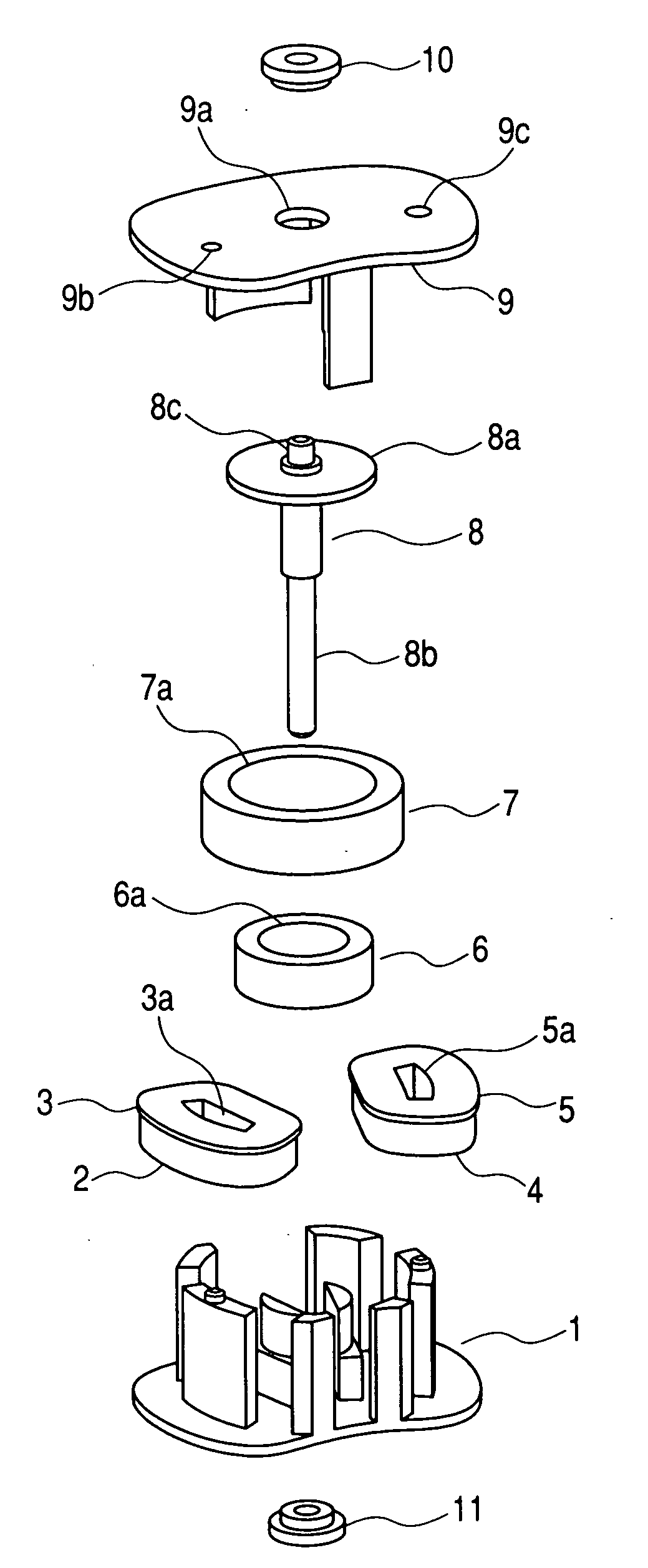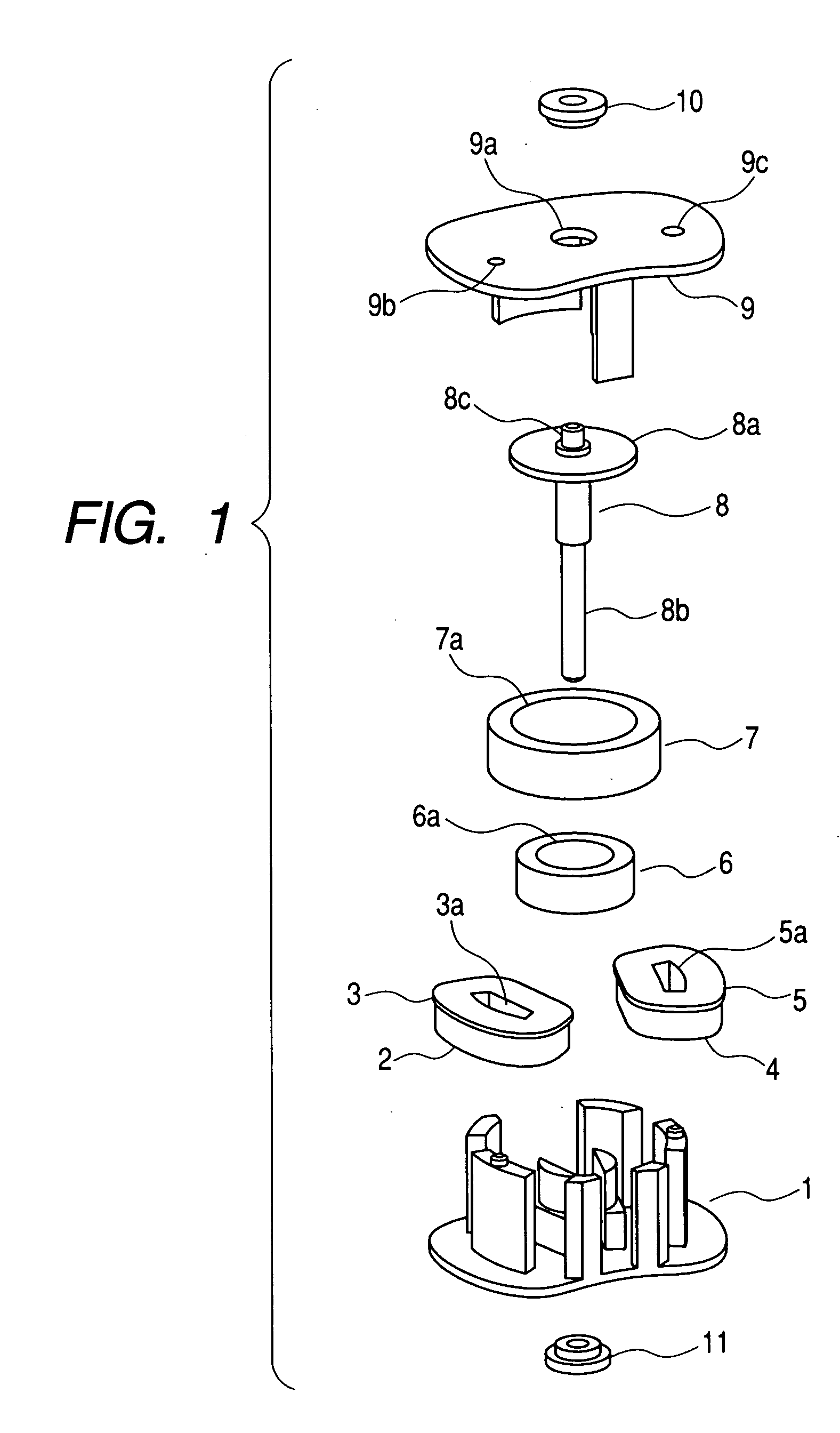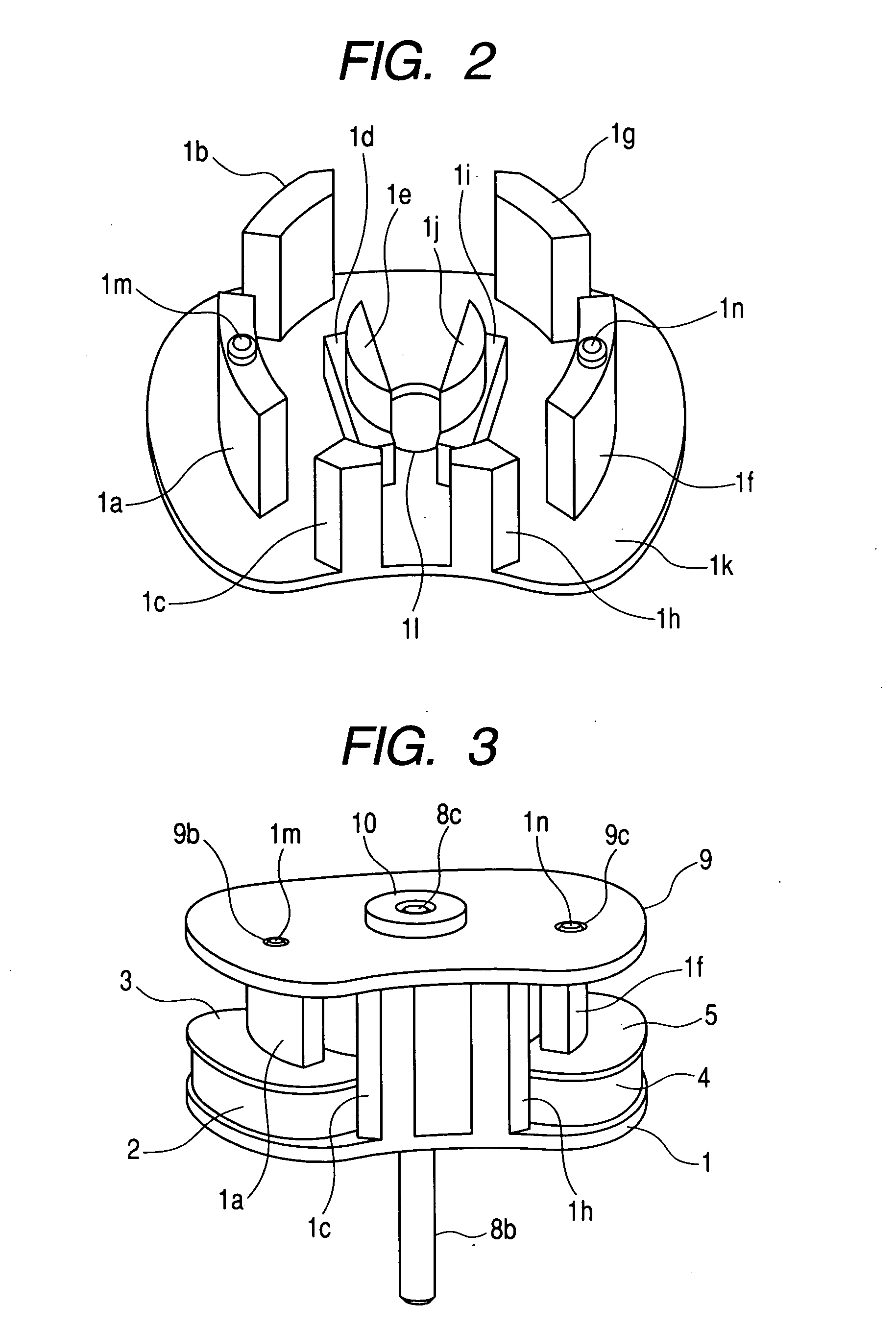Motor and optical apparatus
a technology of cylindrical motors and optical apparatuses, which is applied in the direction of camera focusing arrangement, magnetic circuit shape/form/construction, printers, etc., can solve the problems of difficult arrangement of other components in the motor, long length in the axial direction, and inability to achieve higher output of the motor. achieve the effect of higher outpu
- Summary
- Abstract
- Description
- Claims
- Application Information
AI Technical Summary
Benefits of technology
Problems solved by technology
Method used
Image
Examples
embodiment 1
[0056] FIGS. 1 to 10 are views in accordance with Embodiment 1 of the present invention. FIG. 1 is an exploded perspective view of the motor; FIG. 2 is an enlarged view of a stator that is a structural component of the motor in FIG. 1; FIG. 3 is a view of a complete assembled state of the motor in FIG. 1; and FIG. 4 is a sectional view of a surface in parallel to an axial direction, which is taken along coils and a rotor shaft of the motor in FIG. 1.
[0057] In FIGS. 1 to 4, reference numeral 1 denotes a stator composed of a soft magnetic material, and the stator has a first outer tooth portion 1a, second outer tooth portion 1b, and third outer tooth portion 1c. The first outer tooth portion 1a forms a first outer magnetic pole portion, and the second outer tooth portion 1b and the third outer tooth portion 1c form a second outer magnetic pole portion. Symbol 1d denotes a first inner tooth portion. Symbol 1e denotes a first fitting projection portion, which is formed on one end of th...
embodiment 2
[0114] FIGS. 11 to 16 are views in accordance with Embodiment 2 of the present invention. FIG. 11 is an exploded perspective view of a motor, and FIG. 12 is a sectional view of a surface parallel to an axial direction, which is taken along coils and a rotor shaft of the motor in FIG. 11.
[0115] In FIGS. 11 and 12, reference numeral 31 denotes a stator composed of a soft magnetic material, and the stator has a first outer tooth portion 31a, a second outer tooth portion 31b, and a third outer tooth portion 31c. The first outer tooth portion31a forms a first outer magnetic pole portion, and the second outer tooth portion 31b and the third outer tooth portion 31c form a second outer magnetic pole portion. Symbol 31d denotes a fourth outer tooth portion; 31e, a fifth outer tooth portion; and 31f, a sixth outer tooth portion. The fourth outer tooth portion 31d forms a third outer magnetic pole portion, and the fifth outer tooth portion 31e and the sixth outer tooth portion 31f form a four...
PUM
 Login to View More
Login to View More Abstract
Description
Claims
Application Information
 Login to View More
Login to View More - R&D
- Intellectual Property
- Life Sciences
- Materials
- Tech Scout
- Unparalleled Data Quality
- Higher Quality Content
- 60% Fewer Hallucinations
Browse by: Latest US Patents, China's latest patents, Technical Efficacy Thesaurus, Application Domain, Technology Topic, Popular Technical Reports.
© 2025 PatSnap. All rights reserved.Legal|Privacy policy|Modern Slavery Act Transparency Statement|Sitemap|About US| Contact US: help@patsnap.com



